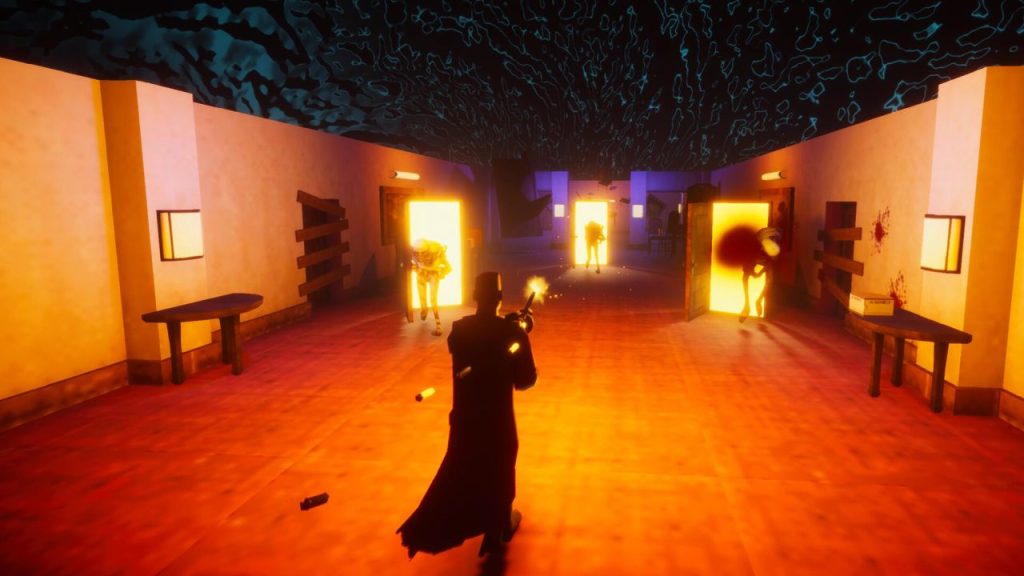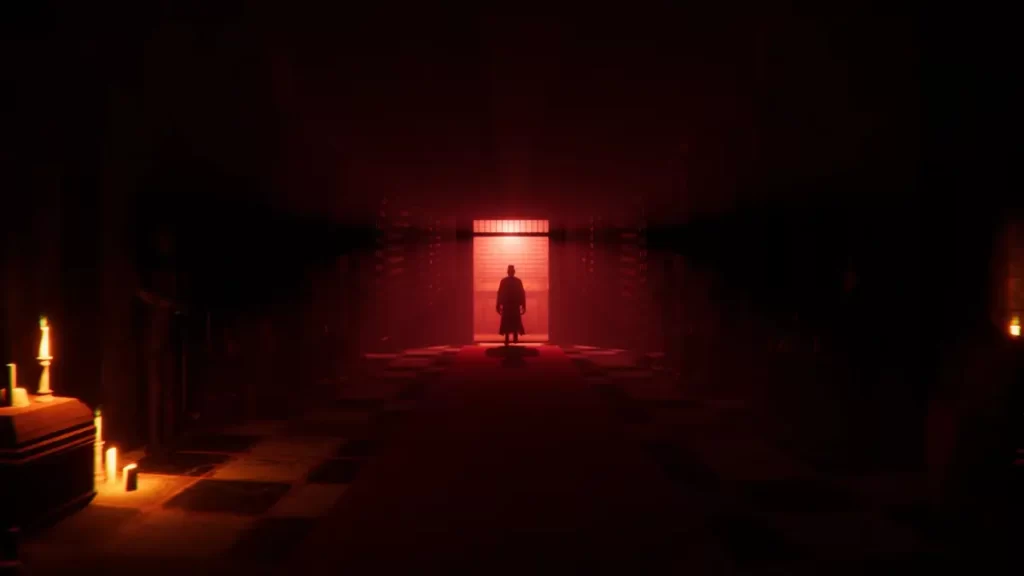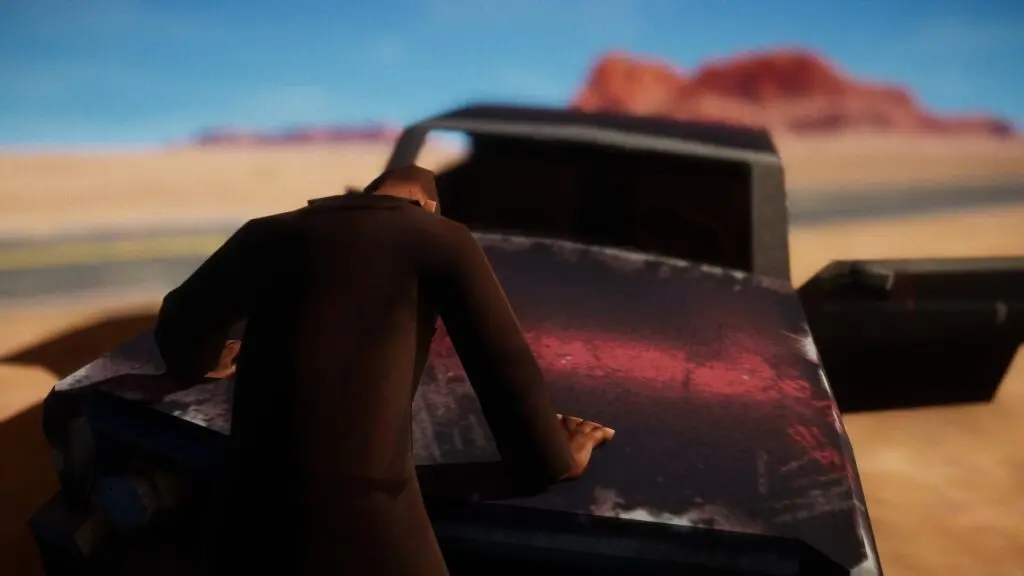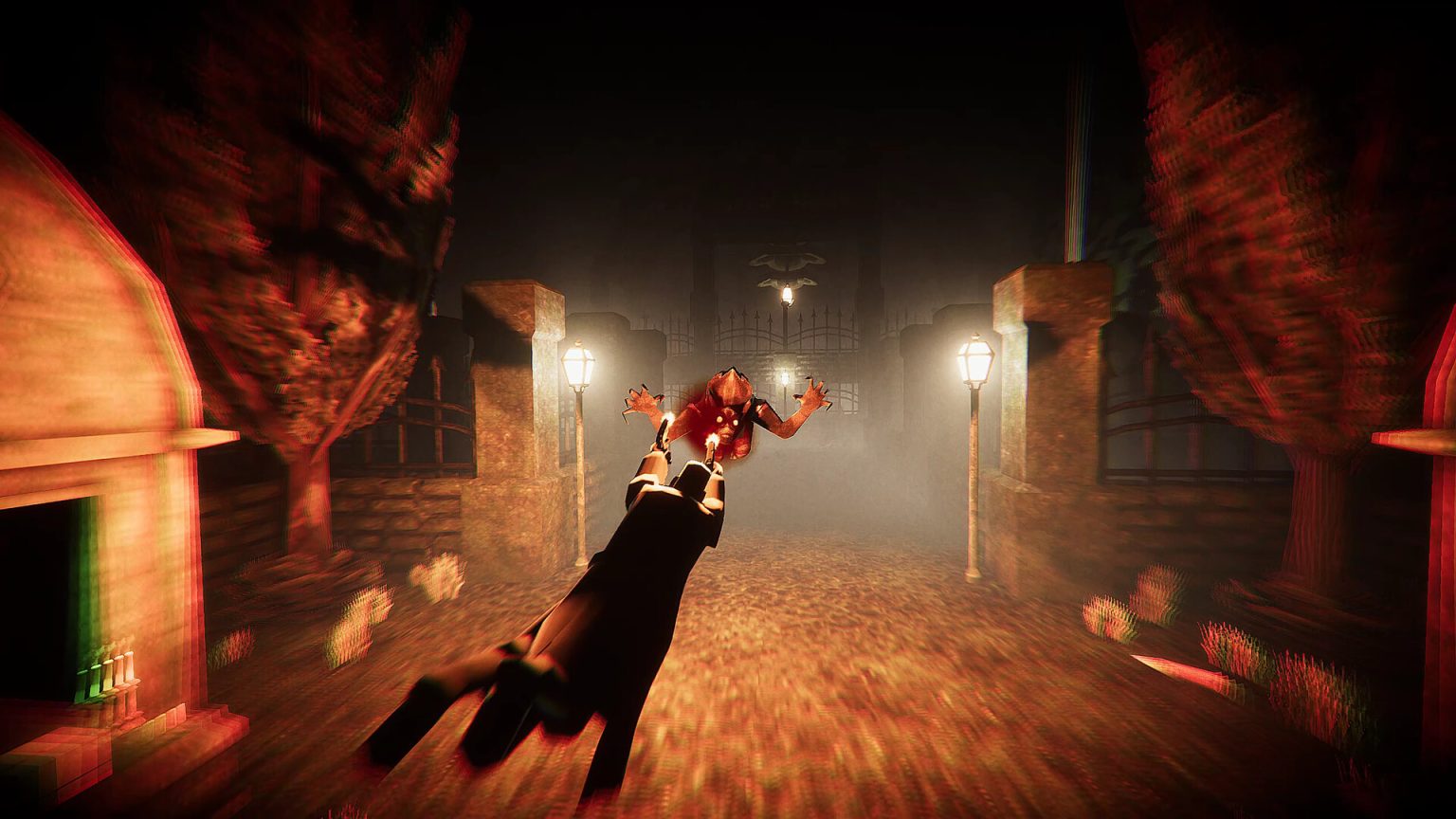Max Payne 3 came out at the end of my first Spring semester in college. Max Payne—the character, the concept, the game series—haunted a portion of my adolescence. Anytime I see bullets slow through the air in a video game, I think about the series’ signature feature, Bullet Time. I remember seeing what seemed like constant advertisements for the first two games developed by Remedy and trailers for the 2008 movie.
Strange Scaffold’s recent release El Paso, Elsewhere isn’t Max Payne. Yet, the game does pay homage to the series’ signature neo-noir style and Bullet Time. It even features a haunted protagonist, James Savage, who monologues often and possesses an array of weapons to use in normal- and slow-motion. None of these parallels are an accident. In the developer’s words, El Paso, Elsewhere is “a new, third-person love letter to classic shooters.”
More importantly, El Paso, Elsewhere creates its own supernatural identity. As Savage, players will slay and stake vampires, werewolves, and fallen angels. Further, Strange Scaffold crafts a story that contains and deconstructs many of the tropes that belonged to those third-person shooters of the early aughts.

Vampires, Werewolves, and Repetition
El Paso, Elsewhere contains 50 levels that will take players around 10 hours to complete. Most of these levels play out similarly: Savage leaves an elevator traveling down through a void. He storms a room on the brink of collapsing in time and space, slaying vampires, werewolves, and other supernatural entities. All of this happens while choosing to either save or kill the innocent folks being held captive. Nearly every level then ends by running back to the elevator. This cycle repeats.
This gameplay loop is simple and tight. For the first half of the game, this loop doesn’t change all that often but rather expands and contracts. Sometimes it features heavy doses of monologue, while other moments feature great music that thematizes the internal and external conflicts that Savage faces. The level design expands to account for hearts of different colors (required to open certain doors), walls appearing and disappearing, and the arrival of new enemies that add some light verticality to fights.
The core of the loop is purposely static. To fully explain why would ruin the experience that Strange Scaffold built. During a portion of the first half of El Paso, Elsewhere, I found this repetition grinding to the point that when the protagonist initially commented on it, I awkwardly laughed in frustration.
The developers at Strange Scaffold know what they are doing. In its narrative structure, El Paso, Elsewhere pays off emotionally in ways that build on the repetition of its gameplay loop. You just have to trust Savage when he asks you to believe.

Elsewheres
I was initially excited about the prospect of a Max Payne-style game in El Paso, Texas, a city which is rich in culture. However, very little of the game, if any, leans on the identity of El Paso itself. Rather, El Paso, Elsewhere almost emphasizes every elsewhere it would like to be.
The game’s elevator jettisons players between hotels (which at times feel reminiscent of Control’s Oceanview Motel) and graveyards. These more modern aesthetics give way to Egyptian ruins and medieval castles. El Paso, Elsewhere thrives on leaving players guessing where their downward elevator will drop them off next.
The game’s most interesting locales mix and match assets between these spaces or add the rare layer of verticality beyond just shooting at an angel attacking from above you. I often found myself excited when the floor would open up below Savage or I could see my supernatural enemies from new perspectives.
These spaces breathe life into the game’s supernatural foes. Werewolves charge through the fog of the cemeteries, enemies shoot projectiles atop pillars, and vampires decimate doors to get to you. The game’s boss battles surprised me as they forced me to combine the game’s gunplay with its stake (melee) mechanic. I was occasionally overwhelmed by enemies, leading to the “You Keep Going” screen (a thoughtful turn on the standard “Game Over”), but I always carried over what I had learned. This also usually meant reminding myself that I could slow time, change weapons, and maneuver through levels just a little differently.

Et Tu, Draculae?
Savage’s relationship with the game’s antagonist Draculae may be the most compelling part of El Paso, Elsewhere. The protagonist tells us early on that Draculae is both his ex and the lord of the vampires. The ritual that she conducts in a little motel in El Paso, Texas, will destroy the world. Savage must stop her.
Sounds familiar and tropey, right? Think again. Their story—narrated through cutscenes, flashbacks, and projectors scattered throughout the void—ultimately brought me to tears.
The story of Savage and Draculae is a painful one. Its portrayal here oscillates between the imagined conversations that we have by ourselves in the shower when we are upset and what those conversations look like when those imagined confrontations are realized.
Draculae is both the source of heartbreak and harm, former lover and abuser.

Final Thoughts: Is El Paso, Elsewhere Worth Playing?
El Paso, Elsewhere might not be Max Payne, but the inspirations are there. James Savage asks players to believe in him during the early moments of the game. That statement early on, as he discusses his sobriety, addiction, and Draculae, carries more weight on this side of his elevator ride through the void.
I enjoyed the game’s gameplay loop, even when I grew frustrated with its repetition. I found the “You Keep Going” screen to be encouraging. With James, I kept fighting through the void even when my faith faltered.
Score: 8.0/10
El Paso, Elsewhere released on September 26, 2023, for PC, Xbox One, and Xbox Series X/S, and was developed and published by Strange Scaffold.
Clint is a writer and educator based out of Columbus, OH. You can often find him writing about Middle English poetry, medieval games, or video games. He just finished a PhD in English at the Ohio State University. You can find his academic and public work at clintmorrisonjr.com.










